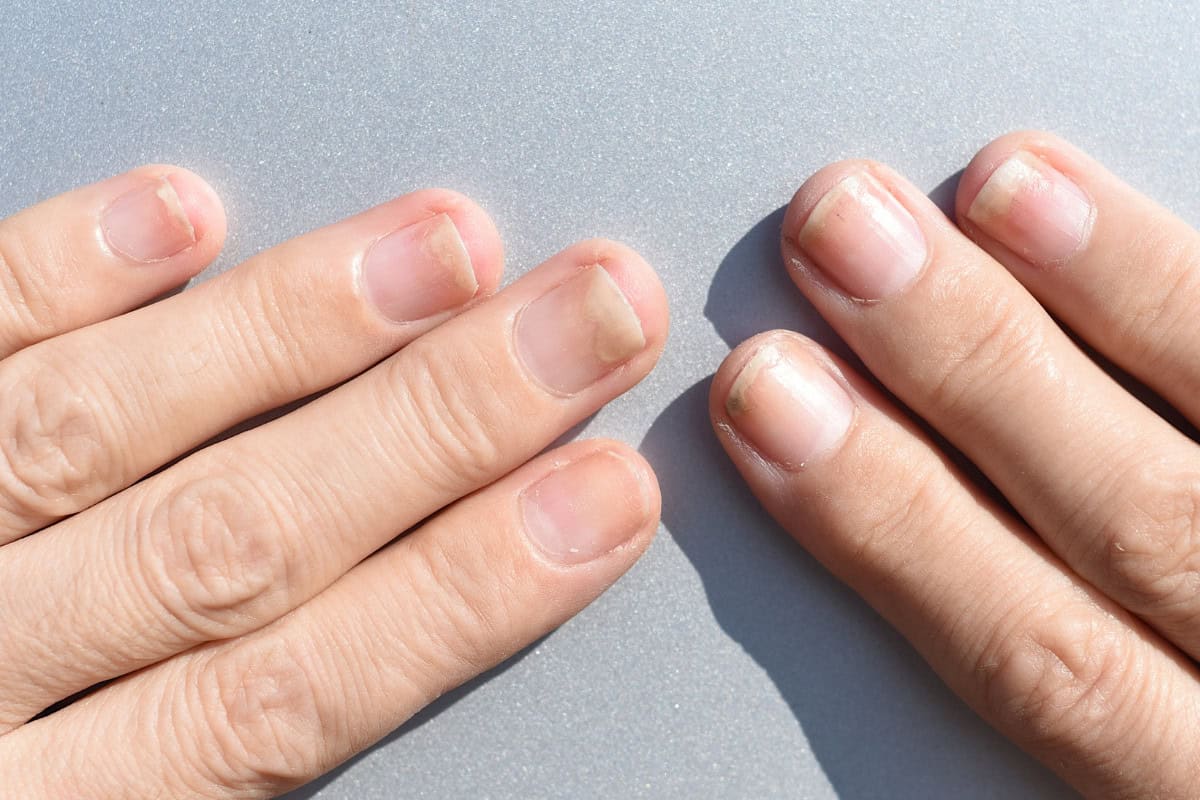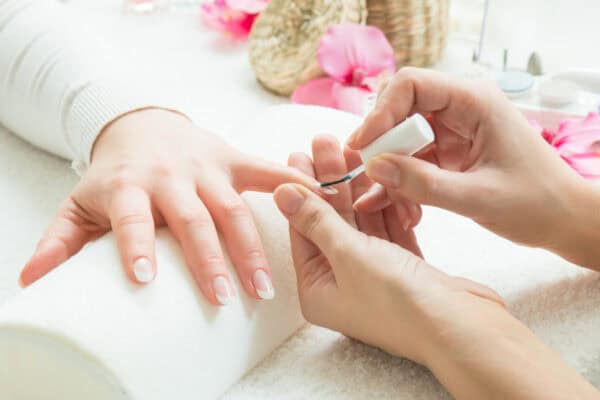
Onycholysis: what is it & how can it be treated?
By Jess Watts | 31 July 2025 | Expert Advice, Feature, Health & Wellbeing

Let’s talk the causes of onycholysis, aka nail separation, how to prevent and what to do when it’s presented at the nail desk…
Picture this: you scrape your knee and pop a plaster over the top to help it heal. Three days later, that plaster has started to lift. At this point, it’s got all the sticking power of last year’s New Year’s resolutions, and the edges are collecting lint and dust. What’s left to protect the fragile skin underneath from infection?
Onycholysis similarly occurs when the nail plate (the plaster in our metaphor) starts to separate from the nail bed (the injured knee). This creates a white area and cavity where infectious micro-organisms can grow. The nail tries to protect itself by producing extra keratin and forming hardened skin in the exposed area.
What causes onycholysis?

Tracy Anne Shelverton
Tracy Anne Shelverton, nail expert & NailKnowledge blog writer, shares that the condition can occur when ‘the hyponychium is broken by something being pushed under the free edge’. This allows fungal and bacterial infections to enter. (For more information on our friend, the hyponychium, click here.)
Other causes include if the nail bed is met with a substance that causes irritation or an allergic reaction, Tracy writes, as nail bed tissue can keratinise as a form of protection. Similarly, if a severe heat spike burns the nail bed, the area will keratinise and cause the nail plate to separate. Also, improper structure of a nail enhancement can put too much pressure on the natural nail, lifting the nail plate from the nail bed, Tracy reveals.

Marian Newman BEM
Nail industry veteran, Marian Newman BEM, shares in her book, The Complete Nail Technician: Fourth Edition, that improper treatment of the natural nail can cause onycholysis. “Nail plates can be damaged by over-buffing and thinning the nail. They can also be damaged by improper removal of coatings and by clients picking off coatings,” she writes. “If the nail plate is thinned, onycholysis can easily result.”
Preventing onycholysis
To prevent onycholysis, Tracy Anne Shelverton advises nail techs to:
- Ensure you are gentle when cleaning under the free edge of the nail, and advise clients do the same.
- Keep all tools sterilised and avoid damaging the hyponychium.
- Avoid heat spikes, by using a matching nail system and UV lamp and not applying thick layers of product.
- Avoid anything that puts excessive pressure on the nail.

Treating onycholysis
Marian Newman BEM notes that all product must be removed from nails presenting onycholysis, until the nail plate is reattached to the nail bed.
Tracy Anne Shelverton adds that a high-quality nail and skin oil should be used under the free edge. “This will cause the nail bed epithelium (non-living tissue that keeps the nail plate attached to the nail bed) to become elastic again and stop the space being a place for infections to start,” the expert shares.
“Severe cases must be referred to a doctor, especially if signs of bacteria infection, onychomycosis (nail fungus), or inflammation are visible,” she notes.

Read the latest issue









